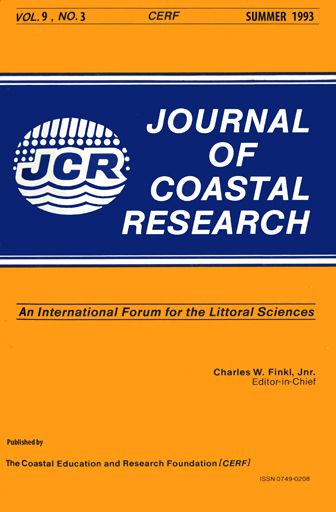Recent Changes to a Climbing-Falling Dune System on the Robberg Peninsula Southern Cape Coast, South Africa
Keywords:
Climbing-falling dune, dune stabilisation, tombolo, Witsand, dune vegetation, South AfricaAbstract
The Robberg peninsula climbing-falling coastal dune system is a possible source of sediment to the peninsula's associated bay (Plettenberg Bay) and beaches. The climbing-falling dune which lies in a southwesterly-north-easterly direction is formed by sand accumulation on the west of the peninsula with transport by the prevailing winds. Progressive dune stabilisation on the climbing-falling dune, by Acacia cyclops, an Australian introduced woody plant, has occurred over the last 54 years curtailing the movement of aeolian sands and thus reducing the potential to supply the bay with beach sediments. The rate at which stabilisation has occurred was determined by measuring and calculating the decrease in exposed surface sands of the dune system from orthophoto maps and aerial photographs. The mobile free sand surface of the dune has decreased its visible surface area by 55% over the last 54 years. Results suggest that sediment input into the Plettenberg Bay has steadily decreased from the time of early Acacia Cyclops infestations. Although these aliens, which invade the natural vegetation, are now being removed, there is little change to the open surface of the dune system due to irreversible changes to the vegetation dynamics and soil properties following stabilisation.


